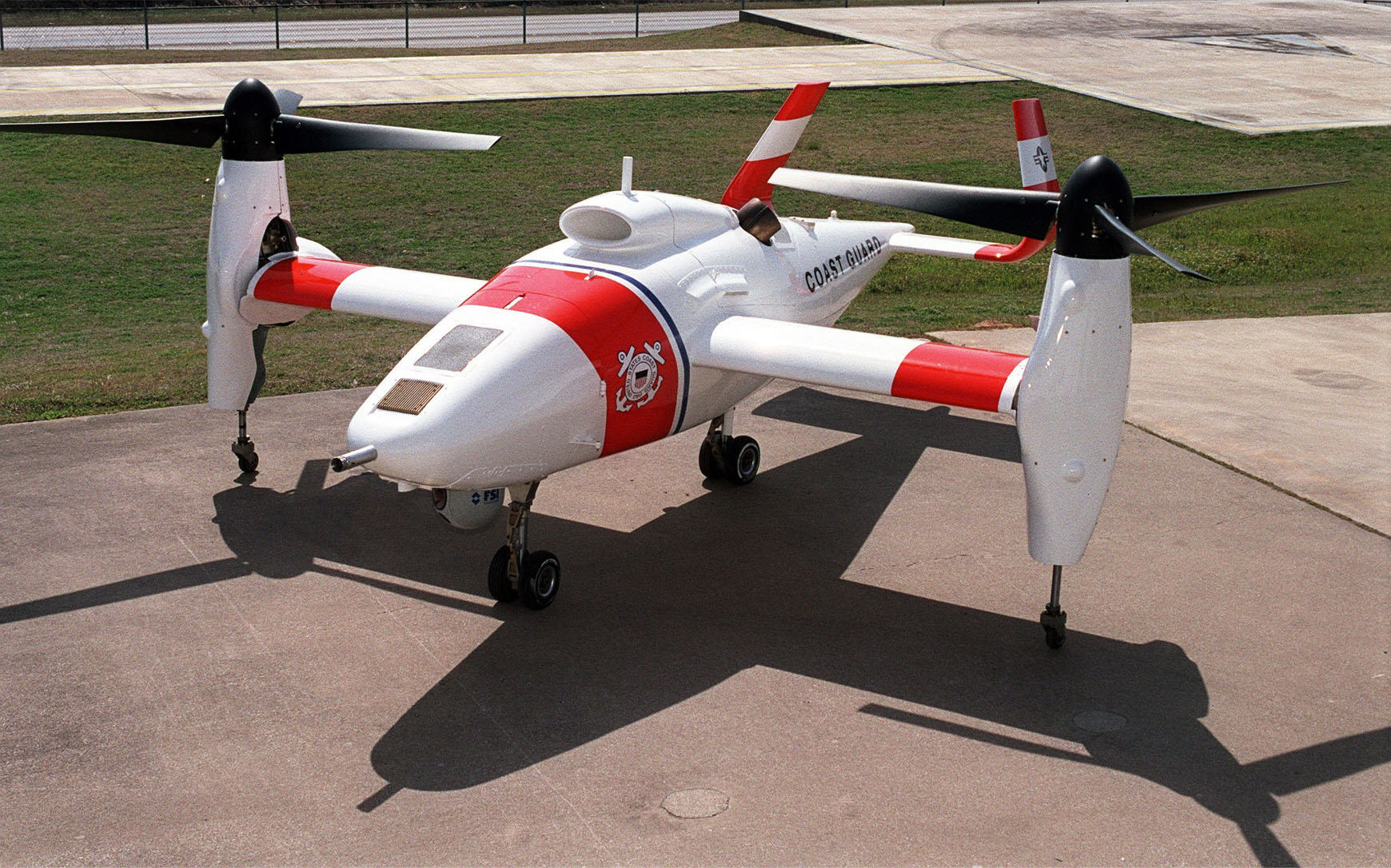- Bell Eagle Eye
infobox Aircraft
name = Eagle Eye
type =tiltrotor unmanned aerial vehicle
manufacturer =Bell Helicopter 
caption = U.S. Coast Guard Vertical Unmanned Aerial Vehicle
designer =
first flight =March 6 ,1998
introduction =
retired =
status =
primary user = U.S. Coast Guard
more users =
produced =
number built =
program cost=
unit cost =
developed from =
variants with their own articles =The Bell Eagle Eye, Model 918, is a
United States tiltrotor unmanned aerial vehicle that was offered as one of the competitors in the U.S. Navy's VT-UAV (Vertical Takeoff - UAV) program.Development
The Eagle Eye program began in 1993 with the TR911X 7/8th scale
prototype . The composite airframe was originally designed and built for Bell by theCalifornia research company "Scaled Composites ". The two demonstrator aircraft were powered by an Allison 250-C20turboshaft engine mounted in the centerfuselage , with a transmission system driving a tilting rotor at the end of each wing. [ [http://www.scaled.com/projects/eagleye.html Scaled Composites information] ]The aircraft had its maiden flight on
March 6 ,1998 , [ [http://www.defense-aerospace.com/cgi-bin/client/modele.pl?prod=28362&session=dae.22678013.1157485437.RP3TfcOa9dUAABGkUZ8&modele=jdc_1 Defense Aerospace] ] and then entered a flight test program. Phase 1, or land-based operations testing, was completed in April 1998. Phase 2 (sea-based testing) started shortly after that. The first prototype was destroyed in an accident, but the second successfully completed the test program.These successes led to the entry into the Deepwater program in 2002 and construction of the full size vehicle, called the TR918, powered by a
Pratt & Whitney Canada P200/55 turboshaft engine.Bell had promoted the Eagle Eye for a decade without finding a buyer, but in the summer of 2002, the U.S. Coast Guard ordered the UAV as part of the service's broad Deepwater re-equipment effort. The Coast Guard machine will be slightly scaled up from the company demonstrator, and will have a maximum speed of 200 kts (370 km/h) and an endurance of 5.5 hours with a 200 pound (90 kilogram) payload.
The US Navy and Marine Corps have also expressed some interest and there have been inquiries from various foreign governments. In the summer of 2004 Bell established a relationship with
Sagem inFrance and Rheinmetall Defense Electronics inGermany to sell variants of the Eagle Eye toEurope an governments. Bell proposes to provide raw airframes, the European partners will provide payloads and other gear as specified by customers, and Bell will then perform system integration.pecifications
aerospecs
ref=
met or eng?=engcrew=0
capacity=
length m=5.56
length ft=18
length in=3
span m=7.37
span ft=24
span in=2
rot number=2
rot dia m=3.05
rot dia ft=10
rot dia in=0
width m=
width ft=
width in=
height m=1.88
height ft=6
height in=2
wing area sqm=
wing area sqft=
rot area sqm=14.6
rot area sqft=157
empty weight kg=
empty weight lb=
gross weight kg=
gross weight lb=eng1 number=1
eng1 type=Pratt & Whitney PW200/55 Marine Turboprop
eng1 kw=478
eng1 hp=641max speed kmh=360
max speed mph=225
cruise speed kmh=
cruise speed mph=
range km=
range miles=
endurance h=6
endurance min=
ceiling m=6,096
ceiling ft=20,000
climb rate ms=
climb rate ftmin=armament1=200 lb (91 kg) payload
armament2=
armament3=
armament4=
armament5=
armament6=References
* [http://bellhelicopter.com/en/aircraft/military/pdf/EagleEye_PG_05_web.pdf Bell Helicopter's Pocket Guide to Eagle Eye]
* [http://www.uscg.mil/deepwater/media/articles-vuavcasestudy.htm Coast Guard Deepwater info]
* [http://www.fas.org/irp/program/collect/eagle-eye.htm Federation of American Scientists entry] .
* This article contains material that originally came from the web article [http://www.vectorsite.net/twuav.html "Unmanned Aerial Vehicles"] by Greg Goebel, which exists in the Public Domain.
Wikimedia Foundation. 2010.
